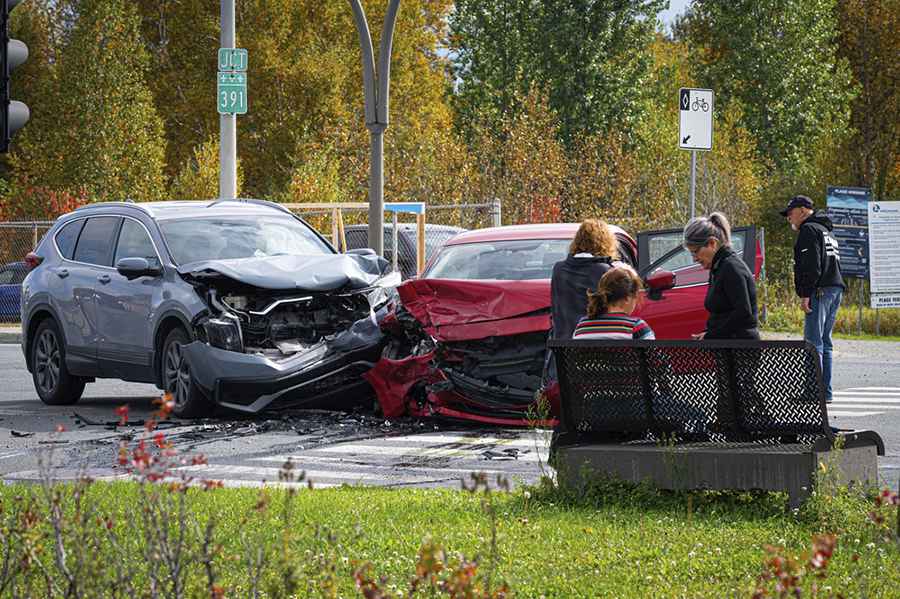Travel Trouble: How To Avoid Accidents on Road Trips
Road trips like this are not limited to the summer months. Approximately 49.1 million Americans expect to travel to their Thanksgiving destinations by automobile. You and your loved ones may be planning a road trip for the holidays, for a graduation, or just to get away and spend time as a family.

No matter when or why you take one, a road trip offers many advantages over other forms of travel. However, they can also present an increased risk of accidents, even for seasoned road warriors. There are at least three reasons, but you can mitigate them with a little forethought. If you are in a car accident through no fault of your own, you should consider contacting a personal injury lawyer to handle your claim.
Driving While Tired And Drowsy
One study by the AAA Foundation for Traffic Safety estimated that as many as 328,000 crashes happen each year because drivers become drowsy or fall asleep at the wheel. Long road trips present the perfect mix of circumstances that can place you behind the wheel of a vehicle without having had sufficient sleep the night before.
After being awake for 20 hours, your ability to drive safely is similar to that of someone with an alcohol concentration of 0.08. However, missing a few hours of sleep each night can also be dangerous. Studies suggest getting six or seven hours of sleep and then driving doubles your risk of getting into a crash. Getting five or fewer hours of sleep doubles your risk again.
How To Stay Safe And Awake
When you go on a road trip or vacation, your sleep schedule will surely be disrupted, at least somewhat. Ensure you plan your trip to not drive too much in one day. Commercial drivers are limited to driving no more than fourteen hours before needing a ten-hour “off” period, and this can be a good rule of thumb for you, too.
Build plenty of time into your itinerary to stop and rest, even for a few minutes. If you feel tired, it is safest to find a nearby motel and stop your travel until you have had sufficient time to rest. Alternatively, plan to share the driving burden with another driver who can take over when you need to rest.
Becoming Distracted While Driving
Distracted driving is a problem that impacts all motorists in the United States, not just those going on long road trips. As many as 3,522 individuals were killed in 2021 in accidents caused by distracted drivers. This is approximately 10% of the 39,508 traffic deaths that occurred nationwide.
Many individuals equate distracted driving with using one’s cell phone while behind the wheel. While cell phones are a common distraction, some other items and activities can be equally distracting:
- Eating or drinking while behind the wheel
- Applying or checking one’s makeup
- Adding or removing articles of clothing
- Looking at distracting sites like accidents, billboards, or roadside attractions
- Talking with passengers or attempting to discipline children
If you are traveling to a new destination, your GPS or navigation device can also be a potential distraction. Most navigation systems are hands-free, but the noise from these devices and programs can catch your attention and divert it from the road.
How To Prevent And Address Distractions
While you may not be able to eliminate all distractions, you should avoid the ones you have control over. Keep your cell phone put away or out of sight, and do not read or respond to messages until you can stop somewhere safe. While driving, you should not eat and avoid drinking beverages like coffee or tea that can scald you if spilled.
Encourage your passengers to minimize talking, fighting, or other activities that can demand your attention. Studying your route ahead of time can help familiarize you with your route and minimize the need to look at your navigation device each time it calls out a new direction. Finally, if you notice you are becoming distracted, pull over and take care of the distraction.
Unfamiliar Roads And Traffic Patterns
You are accustomed to driving around your hometown but may be unfamiliar with your destination. You can unintentionally violate traffic laws like speed limits and right-of-way laws while navigating an unfamiliar city or interstate. Being unfamiliar with new places' laws and driving customs can make you more likely to collide accidentally with other motorists.
Driving safely in a new and unfamiliar area requires paying attention to traffic signs and signals and the movement of other traffic. If the speed limit is 45 miles per hour, but the surrounding traffic is going 60 miles per hour, you may need to adjust your driving so you are not a slow-moving obstacle amid a sea of fast-moving cars.
Reducing The Likelihood Of An Accident
Before you set off on your road trip, familiarize yourself with your route. Do your best to avoid congested inner cities and stick to open interstates when traveling cross-country. Knowing your route can help you keep your eyes on the road and allow you to pay greater attention to how surrounding traffic is moving.
Avoid driving through congested areas during peak travel times, which are generally the morning and evening rush hours. If possible, try to drive at night or between the morning and evening rush hours, when traffic tends to be lighter.
Preparation Can Keep You And Your Family Safe
You have likely prepared for what you will do when you reach your road trip destination. A similar level of planning for the journey can help you and your loved ones avoid a motor vehicle accident. Planning your route to allow time for rest, minimizing distractions, and familiarizing yourself with your route can help you protect your family on your next road trip.
Image credit: Depositphotos